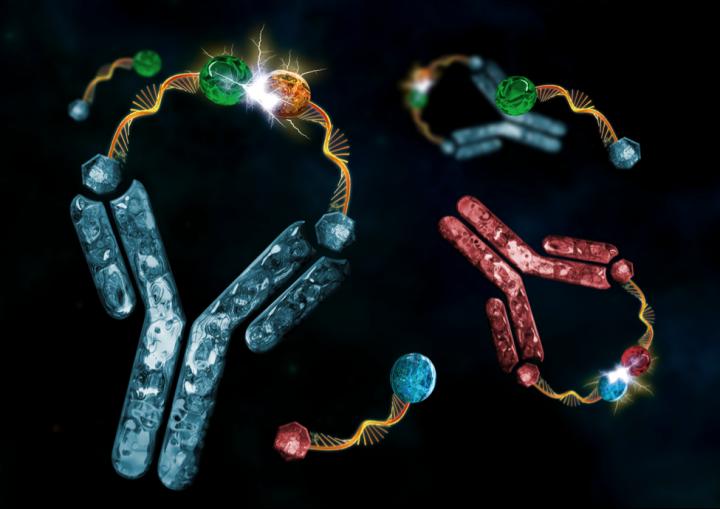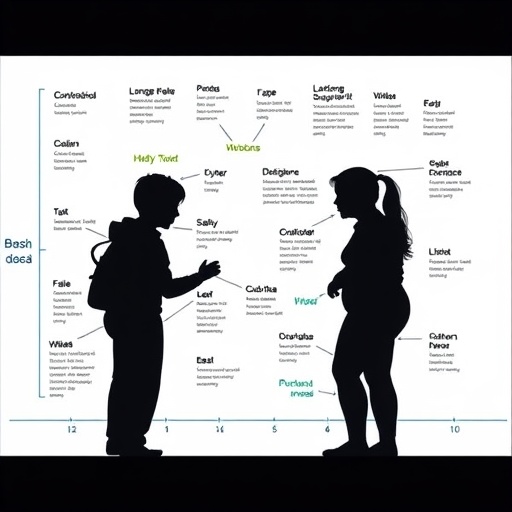Researchers developed a strategy to synthesize functional molecules with specific diagnostic antibodies

Credit: Illustration by Oscar Melendre Hoyos
Antibodies are remarkable biomarkers: they are the cues that provide us with indications about many diseases and how our immune system counter them. Now a group of scientists from the University of Rome, Tor Vergata (Italy) has found a way to repurpose them so that they can trigger a specific chemical reaction.
“We demonstrated a strategy to use specific antibodies to control chemical reactions forming a wide range of molecules, from imaging to therapeutic agents.” says Francesco Ricci, full professor at the University of Rome Tor Vergata and senior author of the article. “Our approach allows to synthesize a functional molecule from inactive precursors only when a specific antibody is present in the reaction mixture”.
To achieve this goal, the researchers took advantage of the versatility of synthetic DNA oligonucleotides and of the predictability of DNA-DNA interactions. “Synthetic oligonucleotides are amazing molecules, they can be modified with a range of reactive groups and also with recognition elements that can target specific antibodies.” says Lorena Baranda, PhD student in the group of Prof. Ricci and first author of the article. “In our work we rationally designed and synthesized a pair of modified DNA sequences that can recognize a specific antibody and bind to it. When this happens the reactive groups appended on the other ends of the DNA strands will be in close proximity and their reaction will be triggered ultimately leading to the formation of a chemical product”, she explains.
The strategy demonstrated in this work can be used, for example, to control the formation of functional molecules, such as therapeutic agents, with biomarker antibodies. As a proof of principle of this possible application the researchers demonstrated the formation of an anticoagulant drug able to inhibit the activity of thrombin, a key enzyme of blood coagulation and an important target for the treatment of thrombosis. “We demonstrated that a specific IgG antibody can trigger the formation of the anticoagulant agent, which was further proven to efficiently inhibit the activity of thrombin” says Prof. Ricci. “The strategy is highly specific to the antibody of interest and also programmable. We envision it would represent a new avenue to targeted therapy and diagnostics”, he concludes.
###
The research in this paper was conducted also by Gianfranco Ercolani and Malihe Mahdifar of the University of Rome Tor Vergata and by Jonathan Watson and Tom Brown Jr of the company ATDBio, Oxford, UK.
Media Contact
Francesco Ricci
[email protected]
Related Journal Article
http://dx.




